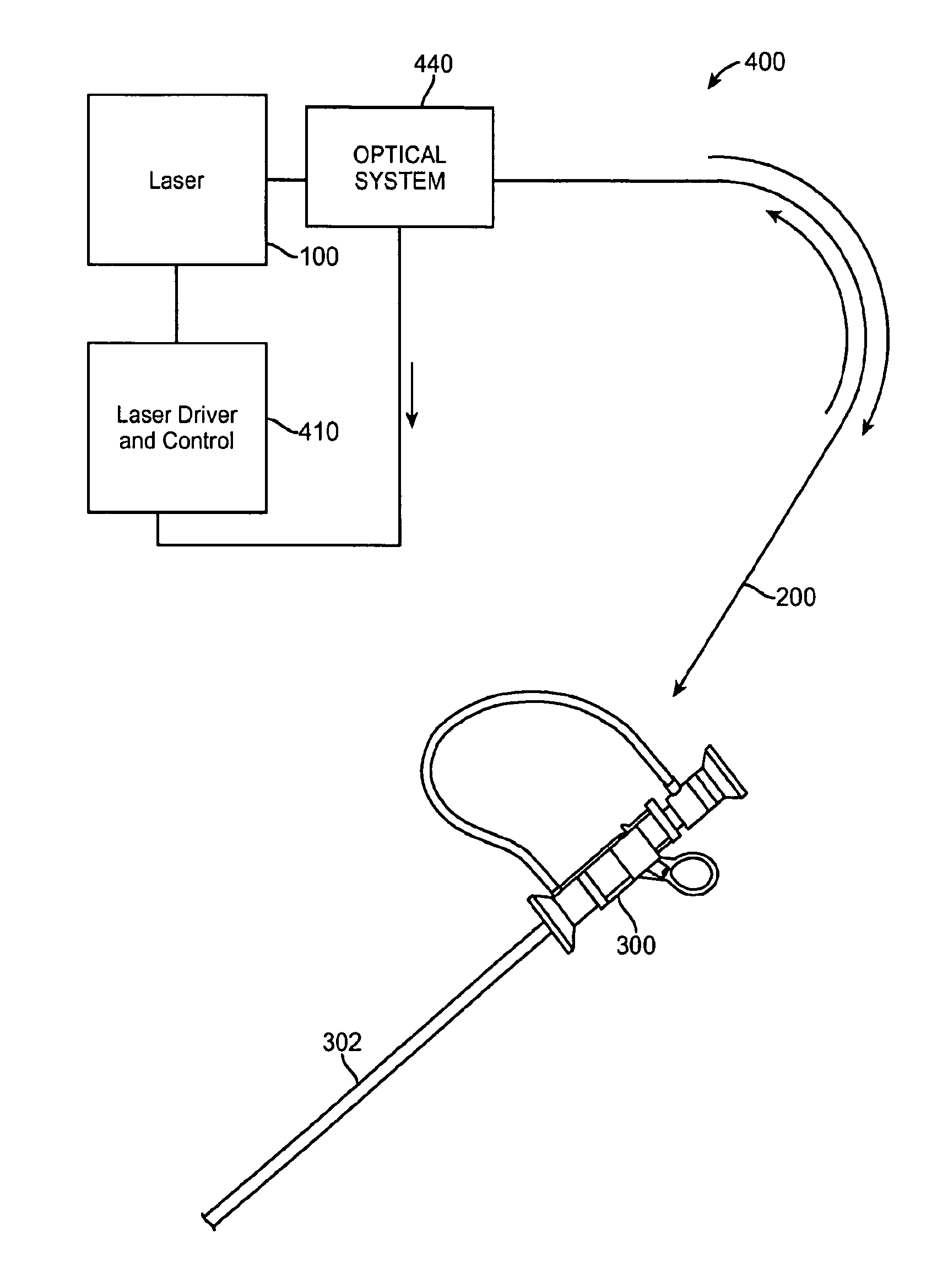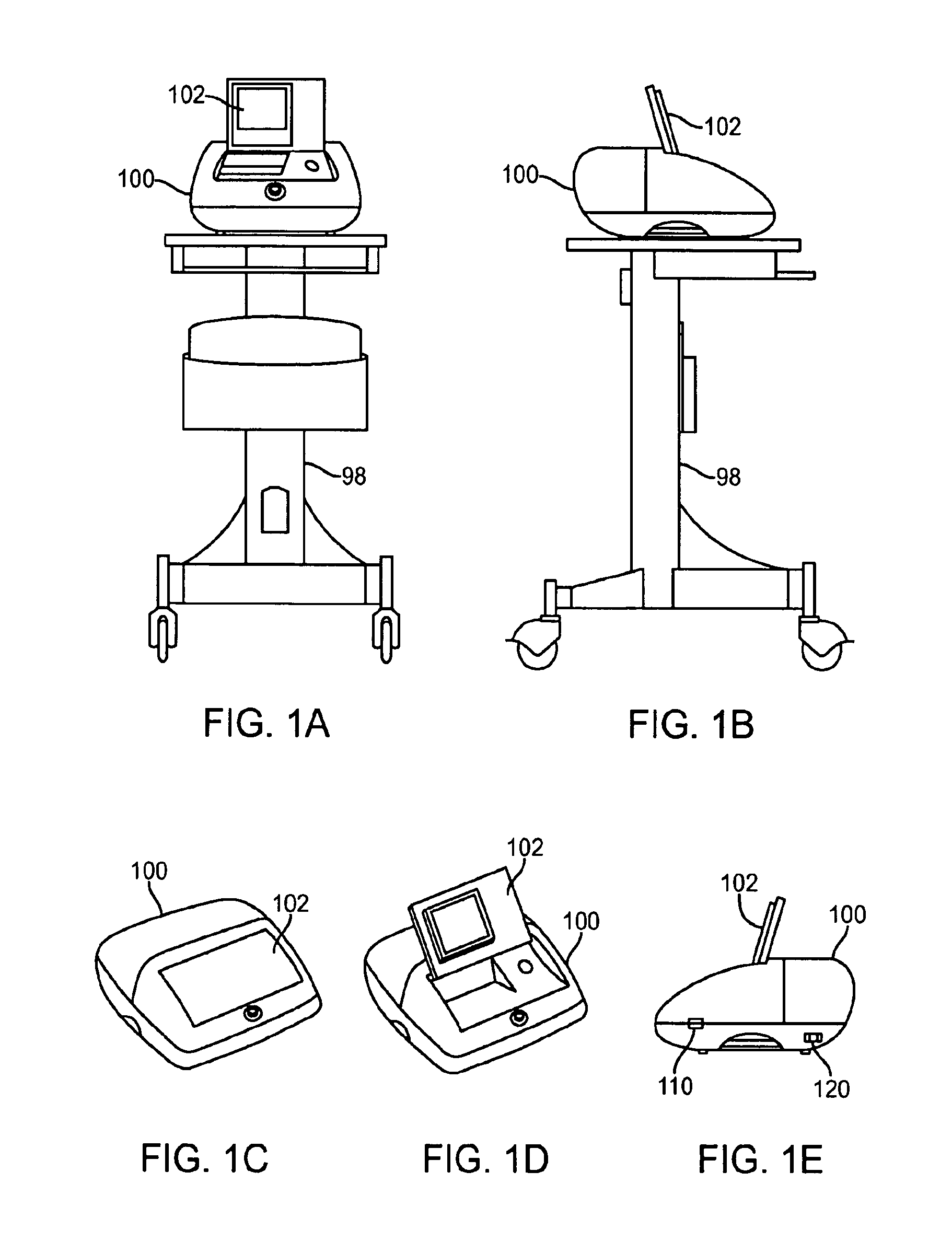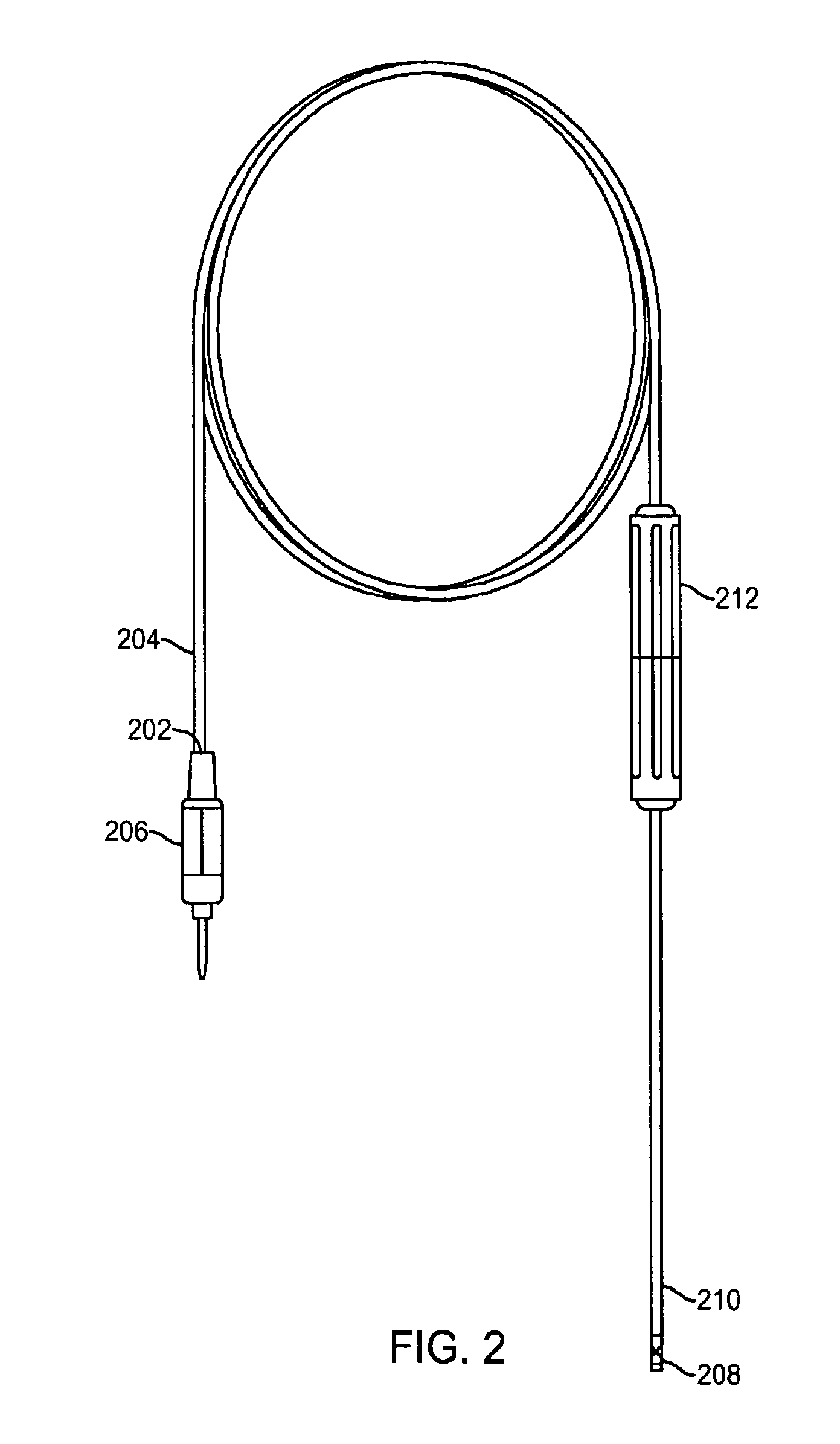[0011]The present invention provides apparatus and methods for laser ablation of tissue. The apparatus includes a
laser treatment system with a
laser source emitting at two or more wavelengths coupled to a fiberoptic laser delivery device and a laser driver and
control system for operating the
laser source. The laser driver and control system implements a number of safety features for protection of the laser delivery device and other components of the laser
treatment system. The laser driver and control system provides a number of advantages over the prior art. In particular, it allows the laser
treatment system to be used for a method of
contact laser vaporization of tissue. As noted above, many prior laser systems were limited to non-contact ablation methods because
contamination of the fiberoptic laser delivery device with tissue or other matter would cause
thermal runaway, quickly leading to destruction of the
optical fiber. This problem is especially prevalent with high power laser sources (above about 50 watts), which is necessary for effective vaporization of tissue. The laser control system monitors the temperature and the operating condition of the fiberoptic laser delivery device and modulates the output beam to maintain the temperature below a predetermined
threshold temperature or within a predetermined temperature range and alerts the user when the operating condition of the fiberoptic laser delivery device is not within a predetermined range for
safe operation. The laser control system operates so as to maintain effective tissue vaporization without causing
thermal runaway and damage to the fiberoptic laser delivery device. In addition, the laser driver and control system monitors other parameters of the laser
treatment system for use by a proximal surface
protection system, a blast shield
protection system, a scope protection system, a
fiber breakage
detector and an ambient beam sensor.
[0014]The
wavelength of a laser strongly affects the interaction of the laser beam with tissue. In particular, the specific absorption characteristics of the laser wavelength in various target chromophores present in the tissue affects the
depth of penetration and the ability to coagulate and / or vaporize tissue. Examples of target chromophores that can be present in the tissue include water,
hemoglobin and
melanin. In addition, dyes can be added to the tissue to increase absorption of certain wavelengths.
Charring of tissue generally increases the
energy absorption at all wavelengths. At low power densities lasers are typically effective at coagulating tissue, but at
higher power densities, above a certain threshold level, some lasers become more effective at ablating or vaporizing tissue. A small amount of beneficial tissue coagulation typically occurs outside of the tissue vaporization region. Generally, the higher the
power density of the laser beam delivered at the
tissue surface, the higher the ratio of tissue vaporization to coagulation will be. The tissue vaporization threshold varies depending on the wavelength, the
tissue type, the delivery method and the beam
power density at the
tissue surface, however it can be determined empirically for a given combination of these parameters. For contact tissue vaporization using a
diode laser delivered though a fiberoptic laser delivery device as described herein for treatment of prostate tissue, reaching the tissue vaporization threshold typically requires approximately 60-80 watts of laser energy. By operating the laser above the tissue vaporization threshold, the laser treatment system of the present invention using a fiberoptic laser delivery device in tissue
contact mode provides an
effective treatment for benign prostatic
hyperplasia by tissue vaporization.
[0015]The method of contact tissue vaporization of the present invention has a number of advantages over the prior art approaches that rely solely on non-contact tissue vaporization. Direct contact allows efficient transmission of laser energy to the tissue without it being absorbed by the
irrigation fluid or by
turbidity in the
irrigation fluid that can occur during laser ablation. The result is a marked amplification of the ablation or tissue vaporization effect of the laser and an increase in the ratio of tissue vaporization to coagulation for a given
power level. Maintaining a close spacing between the laser delivery device and the tissue without inadvertent contact is quite challenging, whereas the simple pull-back motion used in the contact tissue vaporization method is easier to perform and has a much quicker
learning curve for urologists who have been trained in the classic TURP technique. However, the contact tissue vaporization method places quite a bit more thermal stress and mechanical stress on the laser delivery device. It is an inconvenience to the user to have a procedure interrupted because the laser delivery device has failed or has became too ineffective to achieve tissue vaporization. In addition, users will
resist the additional cost of replacing the laser delivery device midway through a procedure. Success of the contact tissue vaporization method can thus be enhanced by using a more durable and efficient laser delivery device. More efficient laser transmission and distribution of any heat generated will reduce the thermal stress on the laser delivery device and a more durable construction will help it to
resist both thermal and mechanical stresses. To this end, the present invention also provides a highly robust and durable fiberoptic laser delivery device that is constructed to minimize transmission losses and to dissipate heat buildup in the device, making it suitable for contact tissue vaporization. In addition, the fiberoptic laser delivery device is designed to provide more contact area between the beam emitting tip and the tissue than previous fiberoptic devices in order to maximize ablation. This more robust and durable fiberoptic laser delivery device coupled with the laser driver and control system of the invention provides a very reliable laser treatment system for contact tissue vaporization.
 Login to View More
Login to View More  Login to View More
Login to View More 


